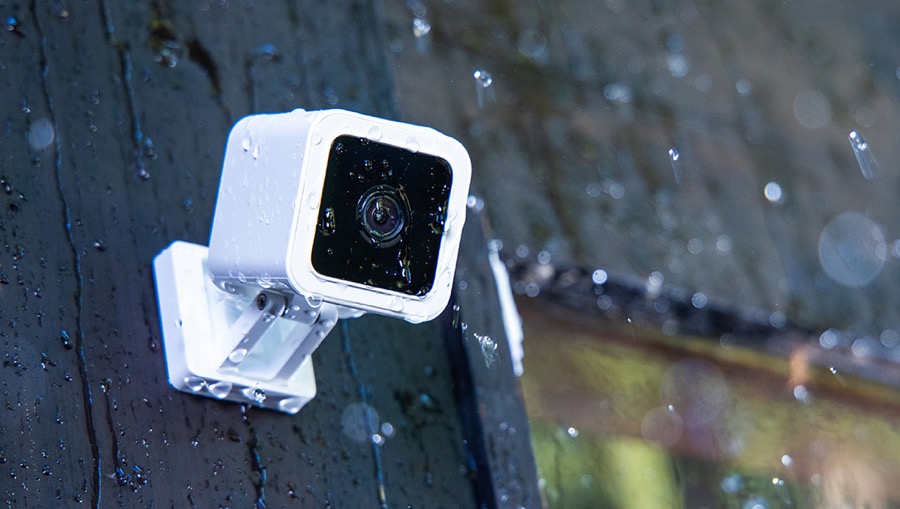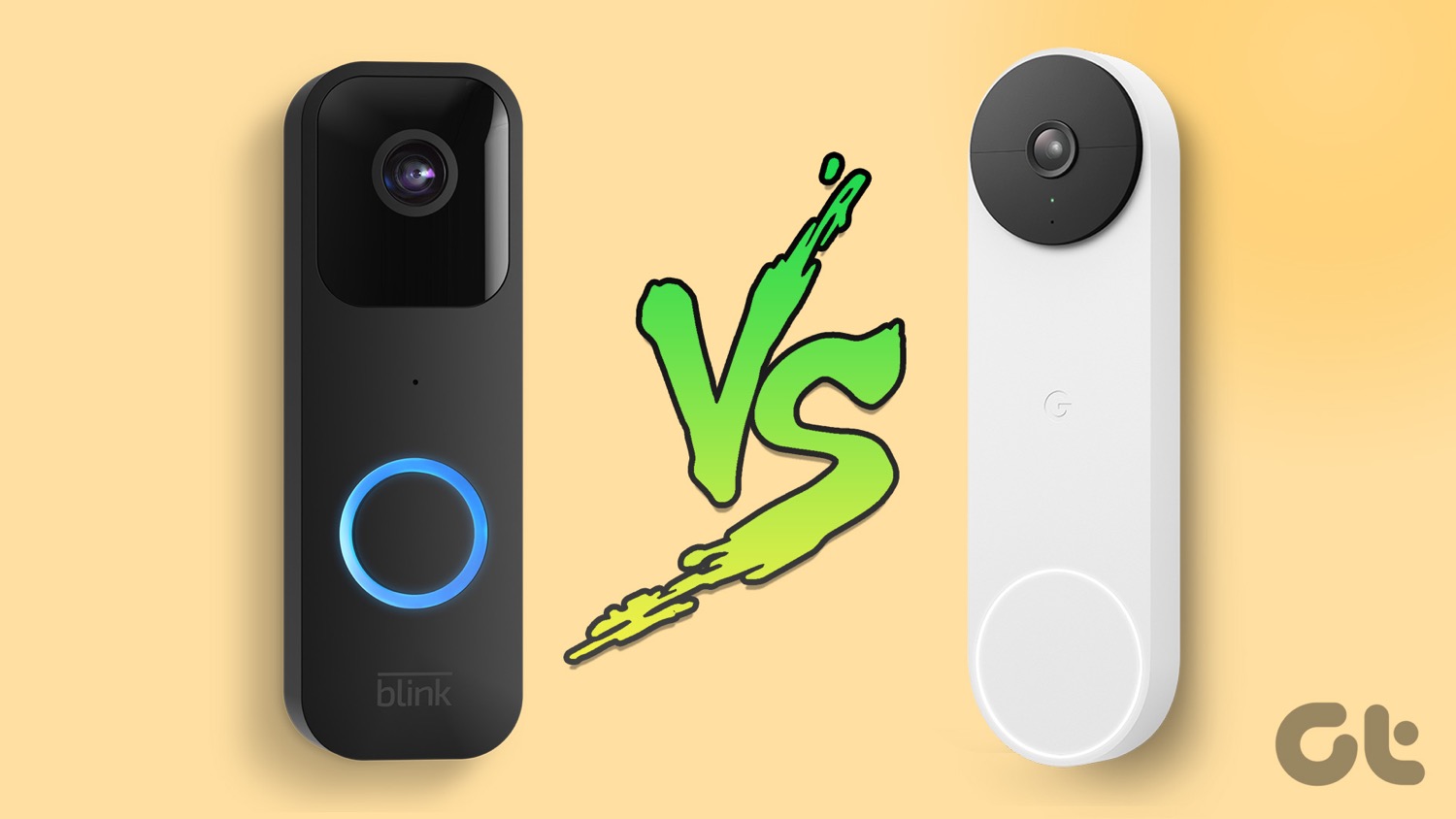Both these outdoor security cameras are sleek and slim and run on batteries, thereby giving you the flexibility of mounting them anywhere. To add to it, they are weatherproof and can handle their share of rain and shine. But at the end of the day which camera should you choose and why? Well, let us make that decision a tad easy for you. In this post, we will compare both the Blink Outdoor and the Wyze Cam Outdoor to find which outdoor security camera is the one for you. So, without further ado, let’s get started. But first,
August Smart Lock vs Wyze Lock: Which smart lock should you buyHere are the best pet feeder cameras with Wi-Fi
Features That Matter
Design
One of the first things that will strike you about both cameras is the size and form factor. And, they are nice to look at. The Blink Outdoor, the successor to the Blink XT2, maintains the same size and measures around 2.7 x 2.7 x 1.2-inch. It’s not an independent camera and needs a hub (Sync Module 2) to function. It’s this module that connects to the Wi-Fi in your house. The Sync Module features a similar design and form factor. You can connect a thumb drive directly to store videos locally. In fact, the connected USB flash drive can record the contents of up to 10 cameras. On the other hand, the Sync Module is a wired device and needs AC power to function. Surprisingly, two AA batteries power the Blink Outdoor. And a single set can last up to two years. Of course, a lot of it depends on your usage, but you are still likely to get long battery life. Installing the Blink Outdoor is simple and uncomplicated. Several users and reviewers have backed this claim as part of their reviews. On the other hand, the Wyze Outdoor Cam shares a similar look and feel as its indoor counterparts and resembles a little Wall-E. No kidding. It’s small and measures just around 2.8 x 2.3 x 2.3-inch. In comparison, it’s a tad heavy. The camera can pivot out of its base and you can rotate or tilt the head. Like its peer, this outdoor camera also comes with a base station or hub which communicates with your house’s Wi-Fi. But the good news is that you can also connect it via the built-in Ethernet port. Additionally, you can store the videos and clips on a microSD card if you do not want to connect the camera to the Internet. Unsurprisingly, this one is a weatherproof camera and can withstand both dust and water.
Features That Matter
Both outdoor cameras record in HD and deliver sharp video footage. While the Blink camera can record at 30FPS, the Wyze records at 20FPS. The difference doesn’t seem much initially. However, the higher FPS results in fluid videos. Blink Outdoor has an FoV of 110-degree and includes support for night vision and two-way audio. It packs a temperature sensor and it lets you set a threshold. So, whenever the temperature goes above (or below) the same, it will notify you. The Wyze camera shares similar features and supports up to 25-feet of B&W night footage. However, it doesn’t have a dedicated temperature sensor. It tries to make up for it with the Travel Mode. This feature lets you record time-lapse videos. And since it stores the videos directly on the local storage, you can place it just about anywhere without worrying about Wi-Fi signal strength. At the same time, you can watch the videos with the companion app.
Performance
So how do these features translate into real-world scenarios? When it comes to the Blink Outdoor camera, you can expect vivid and sharp recordings. The colors are on the spot for daytime recordings. The B&W night recordings have a decent sharpness up to 10-feet. However, the picture may deteriorate if the subject moves away from the camera. That said, the Blink Outdoor has a minuscule barrel distortion. Plus, it lacks person detection, which means you will have to eye the notifications and alerts more. Aside from the above, it lets you perform the usual functions such as creating a geofence and a motion detection zone. It’s worth noting that a motion event is only about 60 seconds long. The sensitivity of the sensors can be customized via the companion app. This comes into great use when you do not want the sensors to fire off, even when a gust of wind hits the camera. At the same time, the onboard mics work well. Should you see anyone on your porch, you can use the two-way audio feature to ward them off. Plus the mics do a good job of picking nighttime noises as well. The Wyze Outdoor Cam brings a similar performance to the table. Daytime FHD videos are sharper and colorful and you should be able to recognize people’s faces and features well. However, if the person of the object in front moves a little too fast, the camera needs a little time to adjust. The same is true of the night videos. The built-in IR camera ensures that the footages are clear and sharp, as long as there are no shaky movements. This Wall-E-like camera also supports two-way audio. However, the folks at Tom’s Guide found the mics to be a little weak to pick up noise from afar. On the upside, it does pick up nearby noises well. While it supports motion detection, the zone can’t be customized. You will need to physically move the camera in the direction in which you want to be monitored. And that can be a hassle if you move the camera around a lot.
Battery Life
Now comes the major difference. The Blink Outdoor is powered by dual AA batteries. The batteries are easily replaceable and each set lasts around two years. As opposed to the above, the Wyze Cam Outdoor is powered by a duo of 2,600mAh batteries. On a single charge (micro-USB), the camera can last up to 6 months. Of course, a lot depends on your usage and how often the sensors are triggered.
Storage
As noted earlier, both outdoor cameras let you store the video footage locally. But if you want to opt for cloud storage, the Blink plan will set you back by around $30 per year. In return for that, you will get rolling storage for about two months for a single camera. Another handy feature of the cloud storage plan is Photo Capture. It will click a photo every single hour and store it in the cloud as suggestive of its name. On the contrary, Wyze offers two weeks’ worth of free storage. Only that the clips will be 12-second long. If you want longer clips, you can subscribe to the paid plan. It costs around $1.99 and supports features like Person Detection.
Which Camera Should You Pick
Both the Wyze Outdoor Cam and the Blink Outdoor are great contenders for the best battery-driven outdoor camera. So, which should you pick? Well, it depends on your requirement. If features like person detection are not important to you and want a crisp and clear video recording, Blink Outdoor is the right pick. The companion app provides a wide array of features (compared to Wyze). The black color makes it inconspicuous, and you also get the option of storing the clips locally. However, if you want the best of cloud and local storage without paying, the Wyze Cam Outdoor makes for a better deal. Though the video quality is average compared to the Blink camera, you get a few handy features like Person Detection and Travel Mode. The app options may not be as diverse as the one above, but it costs way less. The above article may contain affiliate links which help support Guiding Tech. However, it does not affect our editorial integrity. The content remains unbiased and authentic.















